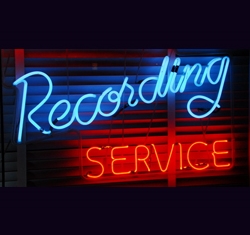
Later that year, he demonstrated an improved version at the Franklin Institute using a flat 7-inch disk with lateral cut grooves on one side only, hand cranked to 30 rpm with a 2-minute capacity.
Berliner would go on to be the first to ever mass-produce hard rubber vulcanite copies from a zinc master disk. Now all you vinyl record lovers can praise the man who invented the “prehistoric” version of your precious turntables and racks of black vinyl.
It wouldn’t be until 1948 that we would see 33-1/3 rpm created, and then 10 years after that, vinyl capable of providing stereo music.
Let’s get moving a little faster here. From 1889 to 1905 (give or take a year) we primarily saw improvements being made to the cylinders and disks being sold.
However, the next major innovation in recording finds it’s way to the history books in 1898. The steel string recorder, based on magnetics, is premiered in Paris two years after its invention, not to be confused with a wire recorder.
We see gramophones being improved, primarily motors as well as needles, which were made lighter weight and less noisy.
Since this column has a point, and it’s not some historical over view of the machines used to record and playback, I’ll start getting to the point.
The year 1908 marks a huge event in recording, at least for those of us who are interested in recording music.
To back track a slight bit, up until 1908, the only major things being put on cylinders and discs were symphonies and operas, made possible by the invention of the double-sided record that came to be around 1902.
In 1908, John Lomax would record a barkeeper singing “Home on the Range” on his Edison Cylinder recorder, and proceeded to publish the song and its lyrics in 1910 in a book called “Cowboy Songs and Frontier Ballads.”
This marked not only the beginning of non-classical recordings, but it would also mark the beginning of what we know as the modern-day music business.
From this point on, companies were established that entered into a contractual agreement with artists to exclusively record and sell songs.
Most notably, the Victor Company began to sign artists in conjunction with their business of manufacturing the “Victrola.”
